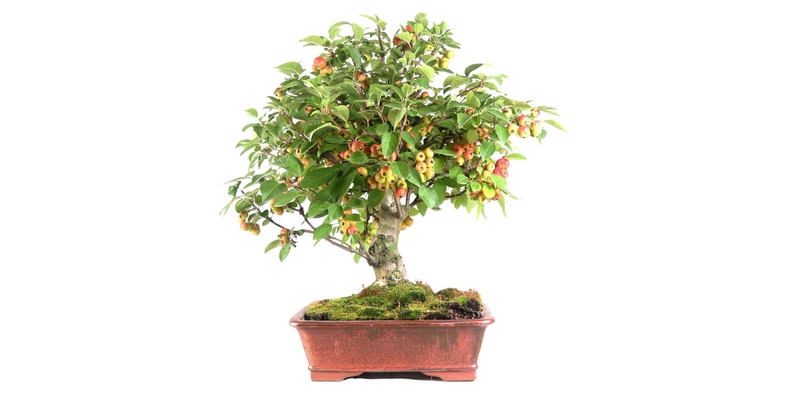
Common Name: Macy
Scientific name: Malus spp.
Characterization: It belongs to the family of Rosaceas and has as main origins Asia, Europe and North America.
Its size is medium and has caduca and oval leaf. They are greatly appreciated in Bonsai for their abundant flowering and fruiting.
It is used for Bonsai several species of Macieiras, most ornamentals, very floribund and with fruits of smaller dimensions, some of diameter less than 1 cm (the Micromalus).
In Europe the Everest variety is widely used, but they also use other fruit and red leaf, in Japan the most oval Malus Haliana of Fruit is very common.
Location: Outside, where take 2 to 3 hours of direct sun per day (ideal in the morning or at the end of the day), protected from strong winds and frosts. They like locations well exposed to the sun and in the cold winter (which will stimulate a good fruiting).
Watering: To water abundantly the earth until a lot of water goes out through the drain holes in order to moisten evenly the soil, always above never by immersion, with a fine drain waterer.
Tips on watering, see irrigation technical data sheet.
Let dry the surface layer of the soil between each watering (to confirm if the plant already needs water, touch the earth with the fingers).
Although very weather-resistant, they have high water consumption mainly during flowering and fruiting. We must avoid watering the flowers so that we do not destroy them.
If you have a dish under Bonsai, never leave any water in it (to prevent the roots from rotting).
There is no advantage in spraying the leaves, just do it in days that it adds and if the fertilizer is specific for foliar application, but ensure that they arrive dry at night to avoid fungi.
Nutrition: From February to end September/October, with a base plan composed of, a complete fertilizer (Fertil Bonsai Humic, or Green & Gold Bonsai Organic or Biogold), and a biostimulant throughout the year (Bio Bonsai Activ), can still be linked with other products in our range.
Detailed information on how to combine these products the rest of our range, or for a more specific nutrition plan, see complete nutrition plan technical sheet.
Poda: We should keep the shape by cutting through the first leaves and apply "Metsumi" to keep the leaves small.
The formation pruning can be done at the end of the winter, but respecting the (fat) floral gums, or alternatively in summer (with or without defoliation) because it has not yet formed the floral gums.
Tips on pruning, see the technical sheet pruning and defoliation.
Transplant: With Terra Bonsai Folhosas at the end of the winter before starting the flowering. In debilitating plants in the year of the transplant we should remove the flowers as they will appear so as not to waste too much the plant.
Details about transplantation, post transplantation and specific fortifiers that you can use refer to trasnplante specification.
Scratch: Before flowering, or early summer with total or partial defoliation.
Indications on padding, see wiring technical sheet.








